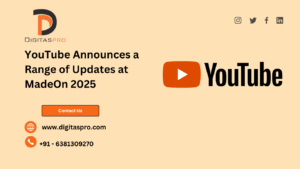Introduction
In a move aimed at improving digital well-being and safety for younger users, YouTube has announced new restrictions on content recommendations for teens. This decision follows growing concerns over the potential negative effects of social media on adolescents’ mental health and well-being.
Why the Restrictions?
The decision comes amidst heightened awareness of the role digital platforms play in influencing young minds. Research suggests that excessive exposure to certain types of content can negatively impact teens’ mental health, body image, and self-esteem. In response, YouTube is adopting a proactive approach to limit teens’ exposure to potentially harmful or inappropriate content.
Key Changes in YouTube’s Algorithm
YouTube’s new measures include significant adjustments to its recommendation algorithm for accounts belonging to teens. Some of the key changes include:
- Reduced Recommendations for Sensitive Topics: Content related to potentially harmful themes, including violence, adult topics, and risky challenges, will no longer be readily recommended.
- Age-Appropriate Content Recommendations: The platform will prioritize age-appropriate content, particularly focusing on educational videos, family-friendly entertainment, and content from trusted creators.
- Limits on Auto-Play for Teens: YouTube will also reduce the reliance on auto-play features, giving teens more control over the next video they watch, and promoting healthier screen time habits.
Enhancing Parental Controls
In addition to these changes, YouTube is also introducing more robust parental controls to empower guardians. Parents will now have more control over what content their children are exposed to, including the ability to block specific channels or types of content.
Striking a Balance Between Safety and Entertainment
While YouTube remains a major source of entertainment and information for teens, the platform is actively working to strike a balance between keeping them engaged and ensuring their safety. These changes align with broader trends in the tech industry, where platforms are increasingly being held accountable for the well-being of their younger users.
Impact on Content Creators
For creators, these changes will have an impact on how content is promoted to younger audiences. Content that is educational, wholesome, and family-friendly is more likely to reach teen viewers, while creators who focus on sensitive or controversial topics may experience reduced visibility.
Conclusion
YouTube’s move to restrict content recommendations for teens is a step toward creating a safer online environment for younger users. As concerns over mental health and digital well-being grow, these changes demonstrate YouTube’s commitment to protecting its younger audience, while still providing a platform for education, creativity, and entertainment.
By ensuring a more controlled and mindful recommendation system, YouTube is leading the way in responsible content distribution for teens.


